
How to Use MAX30205: Examples, Pinouts, and Specs
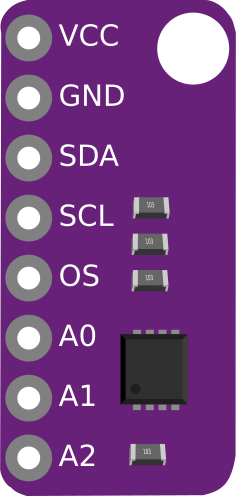
 Design with MAX30205 in Cirkit Designer
Design with MAX30205 in Cirkit DesignerIntroduction
The MAX30205 is a high-accuracy digital temperature sensor designed to measure temperatures in the range of -40°C to +125°C with a resolution of 0.0625°C. It communicates via the I2C interface, making it easy to integrate into microcontroller-based systems. This sensor is particularly suited for medical applications, such as patient monitoring, due to its high precision and low power consumption. Additionally, it can be used in industrial, consumer, and environmental monitoring systems.
Explore Projects Built with MAX30205
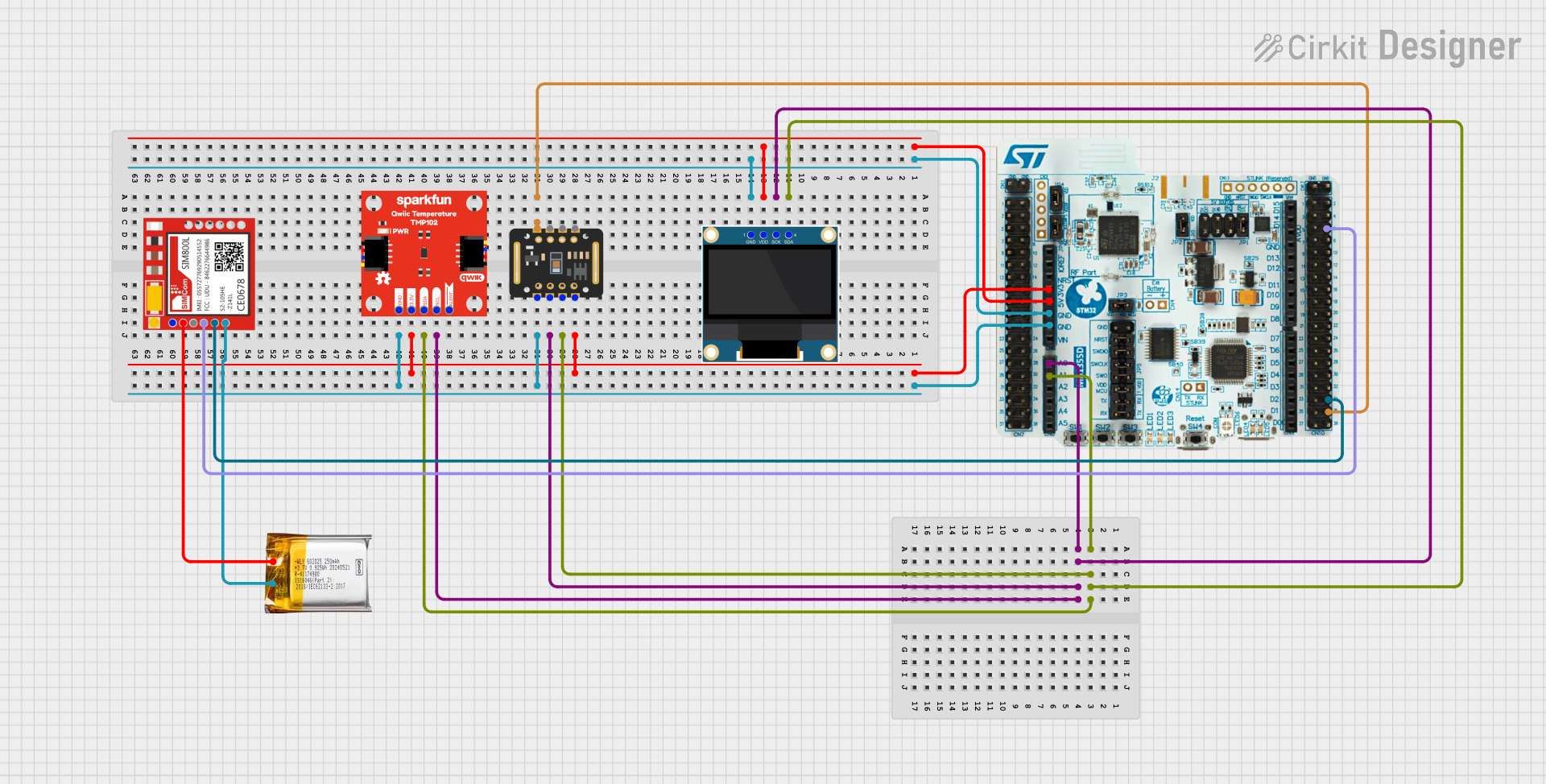
 Open Project in Cirkit Designer
Open Project in Cirkit Designer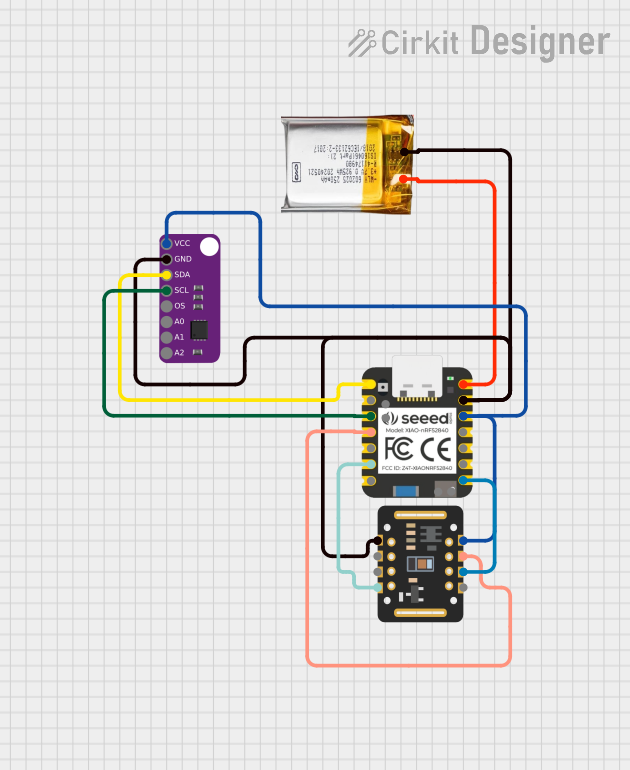
 Open Project in Cirkit Designer
Open Project in Cirkit Designer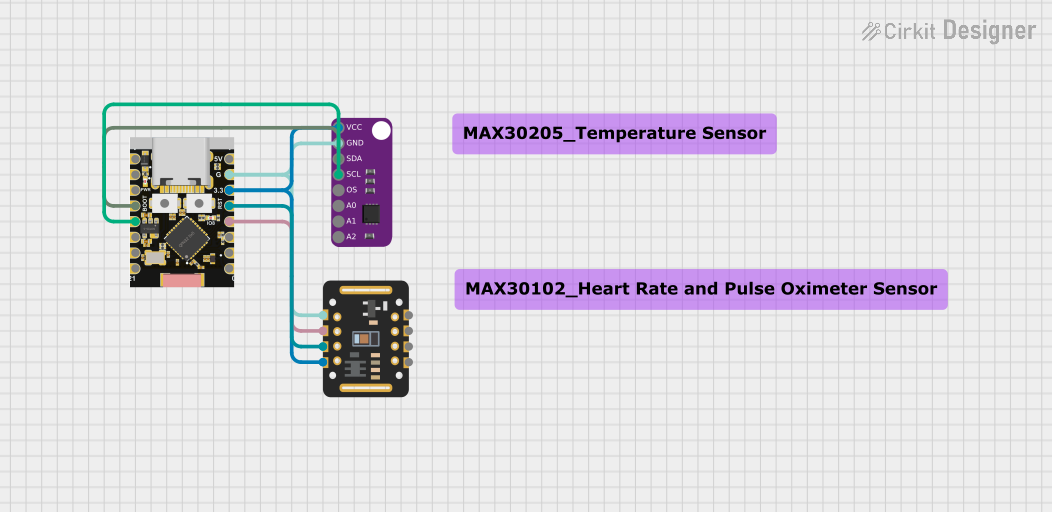
 Open Project in Cirkit Designer
Open Project in Cirkit Designer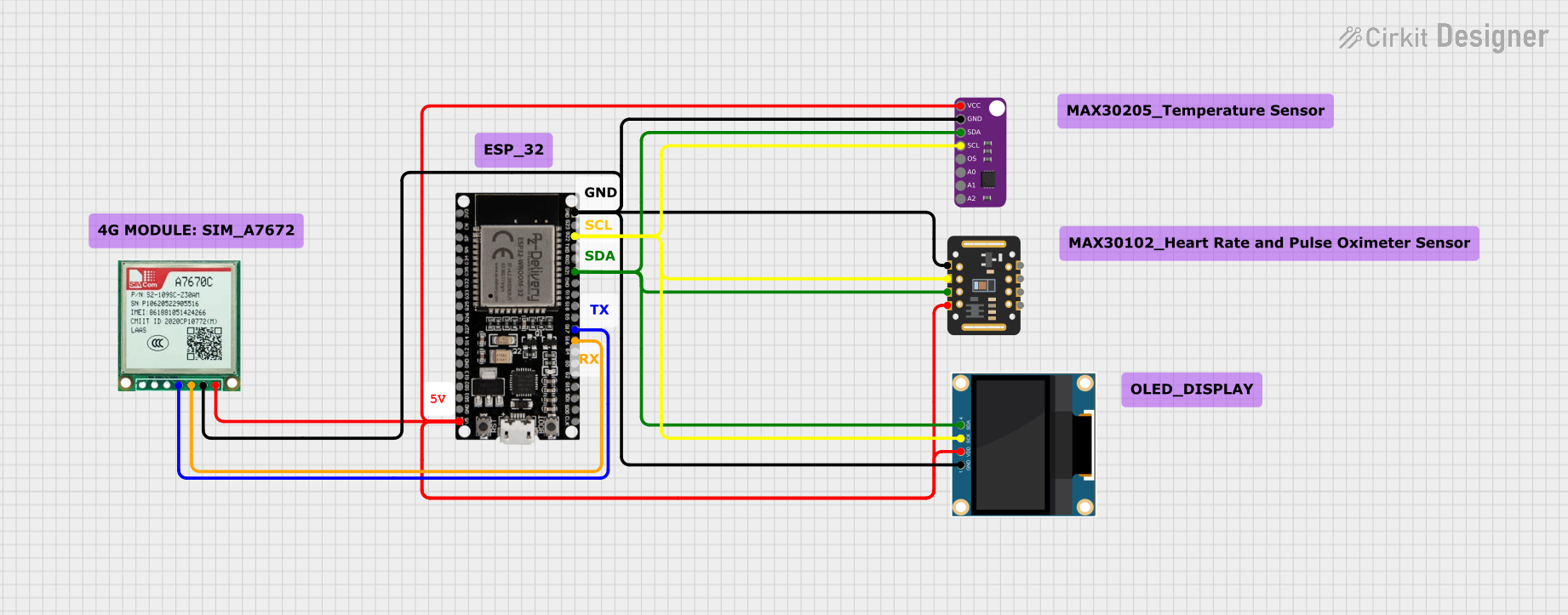
 Open Project in Cirkit Designer
Open Project in Cirkit DesignerExplore Projects Built with MAX30205

 Open Project in Cirkit Designer
Open Project in Cirkit Designer
 Open Project in Cirkit Designer
Open Project in Cirkit Designer
 Open Project in Cirkit Designer
Open Project in Cirkit Designer
 Open Project in Cirkit Designer
Open Project in Cirkit DesignerCommon Applications
- Medical temperature monitoring (e.g., thermometers)
- Industrial temperature sensing
- Environmental monitoring systems
- Consumer electronics requiring precise temperature control
Technical Specifications
The MAX30205 offers the following key technical features:
| Parameter | Value |
|---|---|
| Supply Voltage (VDD) | 2.7V to 3.3V |
| Temperature Range | -40°C to +125°C |
| Temperature Resolution | 0.0625°C |
| Accuracy | ±0.1°C (37°C to 39°C range) |
| Communication Interface | I2C |
| Current Consumption | 600 µA (typical) |
| Shutdown Current | 0.1 µA (typical) |
| Package | 8-pin SOIC |
Pin Configuration and Descriptions
The MAX30205 is available in an 8-pin SOIC package. The pinout and descriptions are as follows:
| Pin Number | Pin Name | Description |
|---|---|---|
| 1 | SDA | Serial Data Line for I2C communication |
| 2 | SCL | Serial Clock Line for I2C communication |
| 3 | ALERT | Over-temperature alert output (open-drain) |
| 4 | GND | Ground |
| 5 | A0 | I2C Address Selection Bit 0 |
| 6 | A1 | I2C Address Selection Bit 1 |
| 7 | A2 | I2C Address Selection Bit 2 |
| 8 | VDD | Power Supply (2.7V to 3.3V) |
Usage Instructions
How to Use the MAX30205 in a Circuit
- Power Supply: Connect the VDD pin to a 3.3V power source and the GND pin to ground.
- I2C Communication: Connect the SDA and SCL pins to the corresponding I2C pins on your microcontroller. Use pull-up resistors (typically 4.7kΩ) on both SDA and SCL lines.
- Address Configuration: Set the I2C address by connecting the A0, A1, and A2 pins to either VDD (logic high) or GND (logic low). This allows up to 8 unique addresses.
- Alert Pin: Optionally, connect the ALERT pin to monitor over-temperature conditions. This pin is open-drain and requires a pull-up resistor.
Best Practices
- Use decoupling capacitors (e.g., 0.1 µF) between VDD and GND to reduce noise.
- Ensure proper pull-up resistors are used on the I2C lines for reliable communication.
- Avoid placing the sensor near heat sources or in areas with high electromagnetic interference.
Example Code for Arduino UNO
Below is an example of how to interface the MAX30205 with an Arduino UNO using the Wire library:
#include <Wire.h>
#define MAX30205_ADDRESS 0x48 // Default I2C address (A0, A1, A2 = GND)
void setup() {
Wire.begin(); // Initialize I2C communication
Serial.begin(9600); // Start serial communication for debugging
// Configure MAX30205 (optional: set configuration register if needed)
Wire.beginTransmission(MAX30205_ADDRESS);
Wire.write(0x01); // Point to configuration register
Wire.write(0x00); // Default configuration (continuous conversion mode)
Wire.endTransmission();
}
void loop() {
float temperature = readTemperature();
Serial.print("Temperature: ");
Serial.print(temperature);
Serial.println(" °C");
delay(1000); // Wait 1 second before the next reading
}
float readTemperature() {
Wire.beginTransmission(MAX30205_ADDRESS);
Wire.write(0x00); // Point to temperature register
Wire.endTransmission();
Wire.requestFrom(MAX30205_ADDRESS, 2); // Request 2 bytes of data
if (Wire.available() == 2) {
uint8_t msb = Wire.read(); // Most significant byte
uint8_t lsb = Wire.read(); // Least significant byte
int16_t rawTemperature = (msb << 8) | lsb; // Combine bytes
return rawTemperature * 0.00390625; // Convert to °C (1 LSB = 0.0625°C)
}
return NAN; // Return NaN if data is not available
}
Notes
- The default I2C address is
0x48when A0, A1, and A2 are connected to GND. Adjust the address in the code if these pins are configured differently. - The temperature is calculated by multiplying the raw 16-bit value by 0.00390625 (1/256).
Troubleshooting and FAQs
Common Issues
No I2C Communication:
- Ensure the SDA and SCL lines have proper pull-up resistors (4.7kΩ recommended).
- Verify the I2C address matches the configuration of the A0, A1, and A2 pins.
- Check for loose or incorrect wiring.
Incorrect Temperature Readings:
- Ensure the sensor is not placed near heat sources or in direct sunlight.
- Verify the power supply voltage is within the specified range (2.7V to 3.3V).
- Check for noise on the power supply line and add decoupling capacitors if necessary.
ALERT Pin Not Functioning:
- Confirm the ALERT pin is connected to a pull-up resistor.
- Verify the over-temperature threshold is correctly configured in the MAX30205 registers.
FAQs
Q: Can the MAX30205 operate at 5V?
A: No, the MAX30205 operates within a supply voltage range of 2.7V to 3.3V. Using 5V may damage the sensor.
Q: How do I change the I2C address?
A: The I2C address is determined by the state of the A0, A1, and A2 pins. Connect these pins to either VDD (logic high) or GND (logic low) to configure the address.
Q: What is the ALERT pin used for?
A: The ALERT pin is an open-drain output that signals when the temperature exceeds a user-defined threshold. It can be used for interrupt-driven applications.
Q: Can I use the MAX30205 for non-medical applications?
A: Yes, the MAX30205 is suitable for a wide range of applications, including industrial and environmental monitoring, where high-accuracy temperature sensing is required.